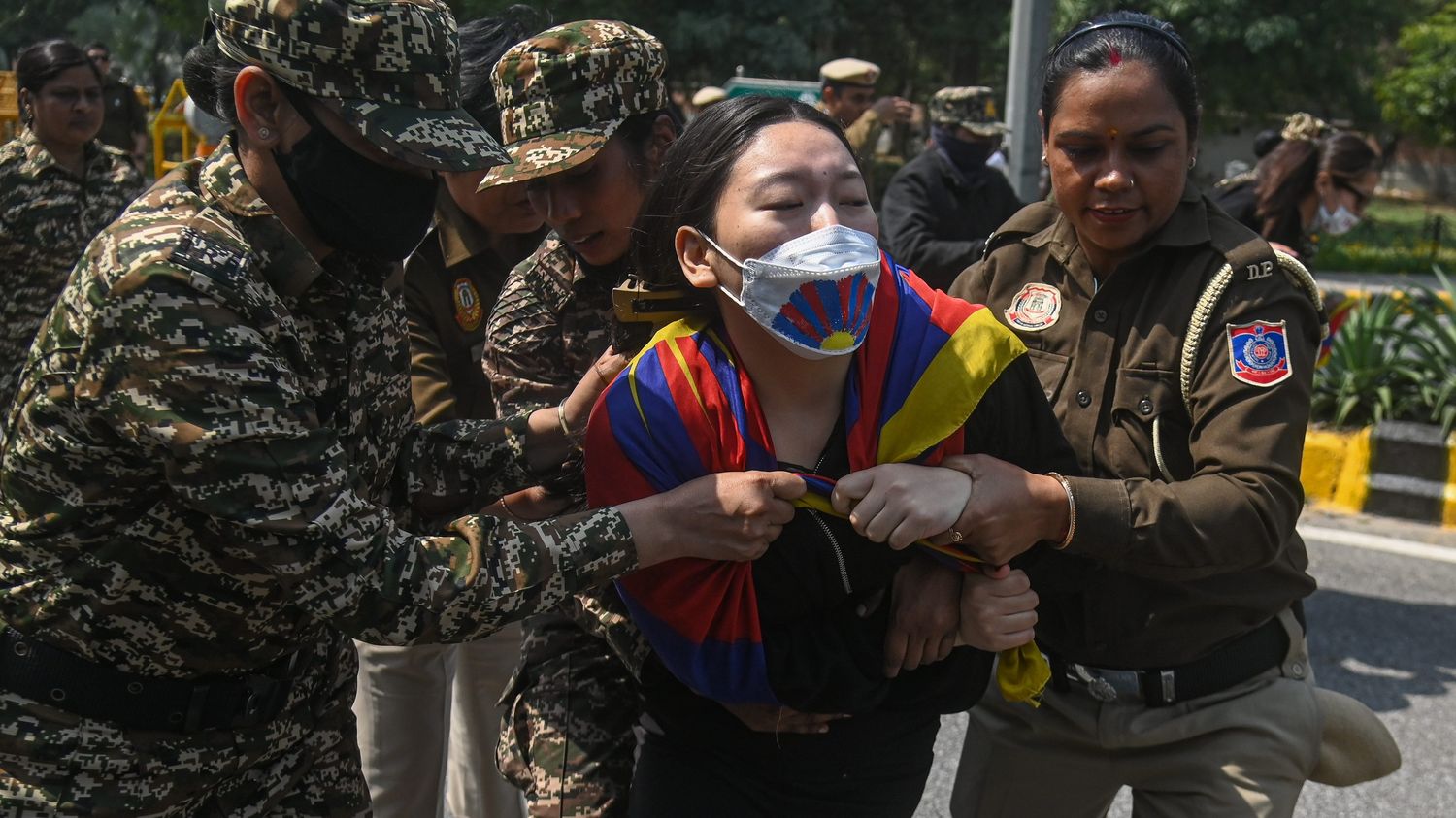65 years ago, Tibetans rose up against Chinese occupation. This revolt was crushed by China and the Dalai Lama then fled Tibet to take refuge in India, followed by around 100,000 Tibetans. In March 2024, our correspondents on site describe this commemoration.
Published
Reading time: 6 min
On March 17, 1959, Tenzin Gyatso, the fourteenth Dalai Lama, spiritual and temporal leader of Tibet, a territory under the control of Communist China for nine years, made the decision to flee his palace in Lhasa, the capital, to join India . This followed an armed revolt which broke out on March 10, 1959 and which was severely suppressed by the Chinese government, with an estimated number of Tibetan victims in the tens of thousands.
In 2024, 65 years later, this anniversary is obviously seen in completely opposite ways in China and India, as well as in Canada, where there is one of the largest communities of Tibetans outside of Asia.
China touts its benefits to Tibet, but foreign journalists cannot access the territory
This year, in Beijing, the official press was very discreet on this subject. Some years, the official media recalled Beijing’s position on the events of March 1959, but this time, they said nothing on this subject which remains extremely sensitive. However yesterday, on March 10, the anniversary of the Tibetan uprising in 1959, in the middle of the annual session of the Chinese parliament, one of the members of one of the two assemblies from Tibet was chosen to speak in public “China’s extraordinary achievements in Tibet”. Last week, the Chinese Ministry of Foreign Affairs also recalled that China has brought social stability, economic growth, and, in official words, “harmony between various religious beliefs”.
This propaganda speech is intended to counter the opposing vision defended by Tibetan activists in exile who denounce the pressure exerted by Beijing on the autonomous region, as well as accusations by the UN of human rights violations in the Tibet who always target the Beijing regime. Just a few days ago, the UN High Commissioner for Human Rights spoke about laws, policies and practices that violate human rights. Beijing has dismissed the accusations as baseless allegations and a pretext to interfere in China’s internal affairs.
It is difficult to know what precisely is happening in Tibet, because the region is still subject to very strict surveillance. If foreign journalists can go to Xinjiang, where the Uyghur majority is located, this remains impossible and prohibited in Tibet.
In India, Tibet holds a special place in the hearts of Indians
In India, this anniversary also resonated because it is here that the Tibetan government in exile found refuge in 1960. The Dalai Lama, spiritual leader of the Tibetans, lives in the Himalayan city of Dharamsala and, at 88 years old, he is also revered by the Indians. India is predominantly Hindu but has long been Buddhist and for many these two religions belong, in some way, to the same family. Prime Minister Narendra Modi also announced that he had personally called the Dalai Lama on his last birthday. There are more than 80,000 Tibetans in India today, located notably in Dharamsala but also in the south of the country in the town of Bylakuppe and its famous monastery.
This Sunday, several hundred gathered in New Delhi, waving the Tibetan flag for the 65th anniversary of this tragic event. With slogans such as “China must leave Tibet”, India is relatively tolerant of these commemorations and demonstrations, although it does not officially recognize the existence of Tibet. The solidarity of Indians towards the Tibetans is also explained by the fact that India and China have been fighting over their border in the Himalayas since 1962.
Canada, a great host country for exiles
In Canada, there are more than 9,000 people of Tibetan origin, according to the latest 2022 census, and this number grows every year. 30 years ago, there were only a few hundred. This expansion can be explained in three phases according to Dicky Chhoyang, former Minister of Foreign Affairs for the Central Tibetan Administration: “There was the first wave, at the beginning of the 70s, of which I was partshe describes, then in the 1990s, many Tibetans, who had difficulty obtaining political asylum in the United States, came to Canada. And the third wave was in 2010, the Canadian government agreed to welcome 1 000 Tibetan refugees.”
A large part of the community lives in Toronto, Ontario, where a Tibetan woman came to power in 2018, a first in North America. Bhutila Karpoche, elected to the Legislative Assembly of the province of Ontario, represents real pride for the community here: “She ensured that the month of July was declared as the month to celebrate Tibetan cultural heritagesays Dicky Chhoyang. It also represents the way in which Tibetans integrate well into their host community.” After a first election in 2018, Bhutila Karpoche was re-elected as a legislative deputy in 2022.
